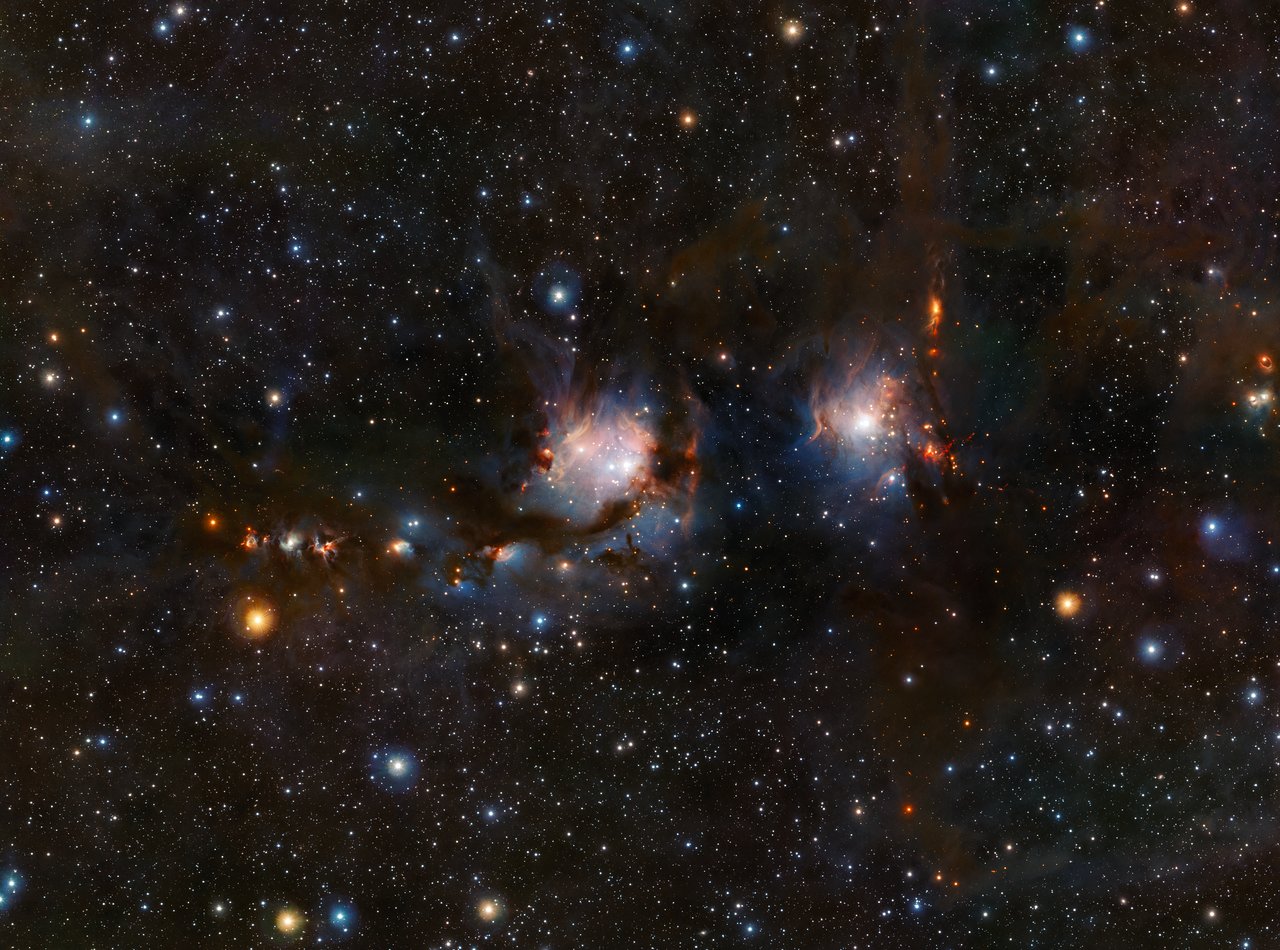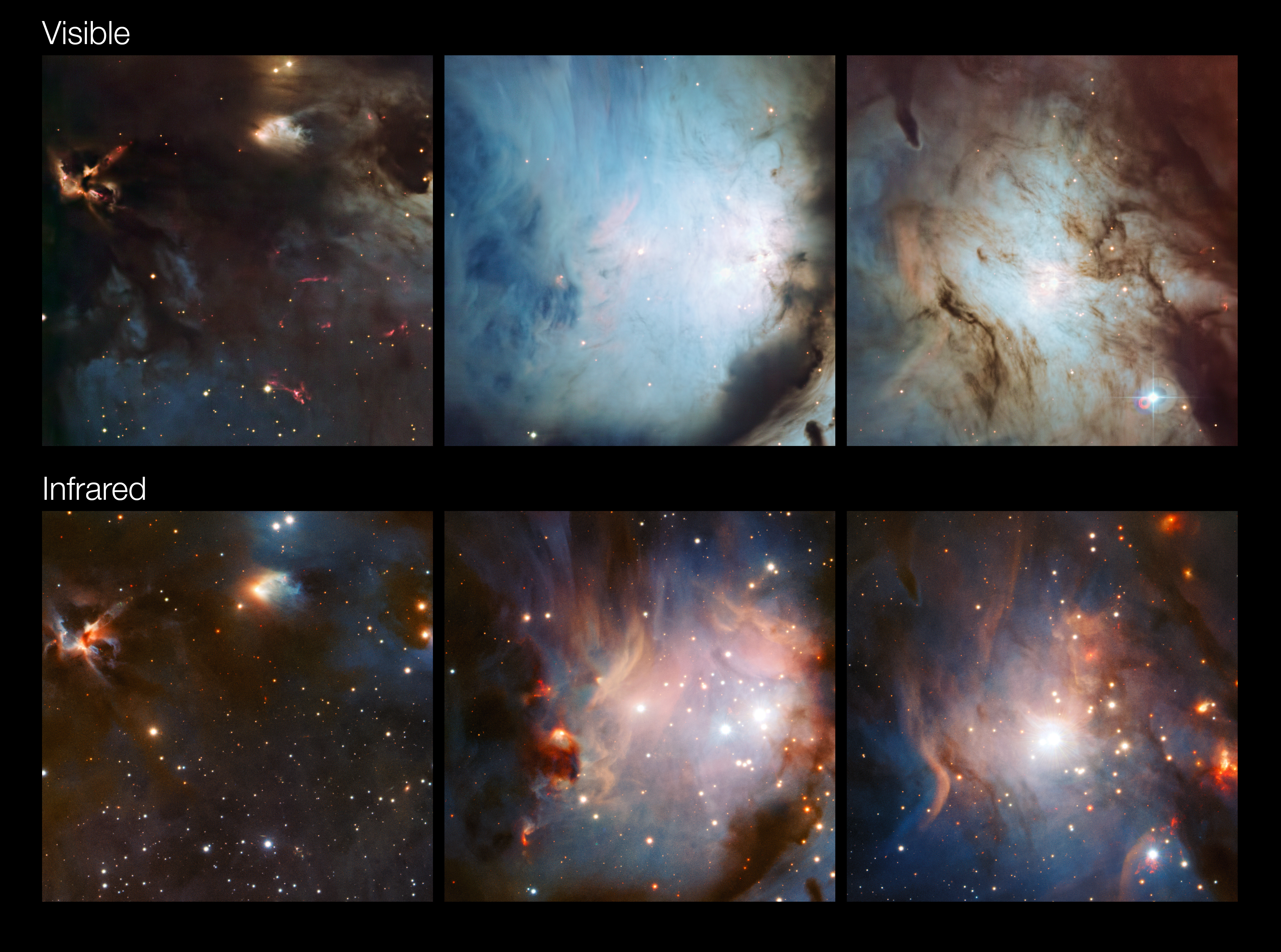'Dustbuster' Telescope Uncovers Hidden Stars

Interstellar dust that blocks astronomers' view of space is no match for the European Southern Observatory's "dustbuster" telescope, which just revealed this dazzling view of several stars that have hidden in the cosmic dust until now.
The Visible and Infrared Survey Telescope for Astronomy (VISTA), located at ESO's Cerro Paranal Observatory in Chile, took this new image of this cloud of gas and dust, called Messier 78 (M78), which resides 1,600 light-years from Earth. Astronomers call M78 a reflection nebula, because it reflects the light from nearby stars. ESO scientists created this video of the stunning nebula to showcase their research.
VISTA is specially designed for this sort of dust-busting work. It sees light in near-infrared wavelengths, which passes straight through the dust. Other wavelengths of light are either blocked or absorbed by interstellar gas and dust.
In visible light, M78 looks like a bright, glowing cloud with a few stars scattered throughout. But VISTA's near-infrared observations reveal countless other stars speckled in, around and beyond the nebula.
Stars in the new photos from VISTA show hot, young stars that glow with bright blue light, as well as red jets spewing from brand new stars as they form. M78 is a well-known star-forming region. Its cold, dense and dusty clouds make it a "prime location" for new stars to form, according to ESO officials.
Since its first observations in 2009, ESO's VISTA telescope has discovered countless objects in space that were once hidden by cosmic dust, including several star clusters in the Milky Way.
Email Hanneke Weitering at hweitering@space.com or follow her @hannekescience. Follow us @Spacedotcom, Facebook and Google+. Original article on Space.com.
Breaking space news, the latest updates on rocket launches, skywatching events and more!

Hanneke Weitering is a multimedia journalist in the Pacific Northwest reporting on the future of aviation at FutureFlight.aero and Aviation International News and was previously the Editor for Spaceflight and Astronomy news here at Space.com. As an editor with over 10 years of experience in science journalism she has previously written for Scholastic Classroom Magazines, MedPage Today and The Joint Institute for Computational Sciences at Oak Ridge National Laboratory. After studying physics at the University of Tennessee in her hometown of Knoxville, she earned her graduate degree in Science, Health and Environmental Reporting (SHERP) from New York University. Hanneke joined the Space.com team in 2016 as a staff writer and producer, covering topics including spaceflight and astronomy. She currently lives in Seattle, home of the Space Needle, with her cat and two snakes. In her spare time, Hanneke enjoys exploring the Rocky Mountains, basking in nature and looking for dark skies to gaze at the cosmos.

